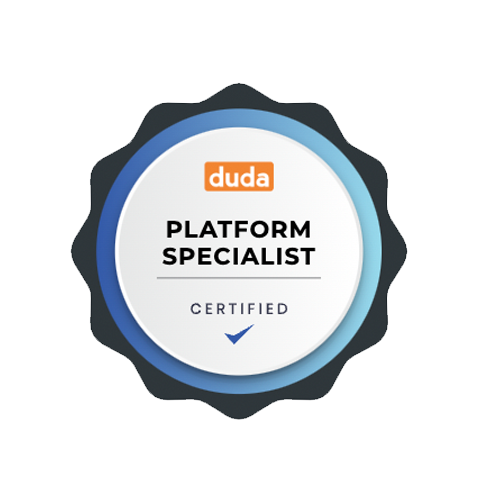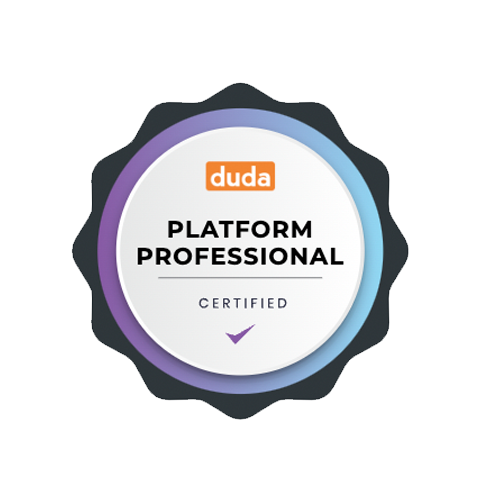E-commerce Website Design Best Practices: Your Guide to Success in Somerville

The digital age has revolutionised the way businesses operate, and nowhere is this more evident than in the world of e-commerce. For businesses in Somerville, creating an effective and appealing e-commerce website is crucial for attracting and retaining customers. As the online marketplace becomes increasingly competitive, adhering to best practices in website design can make all the difference.
Understanding Your Audience
The first step in creating an effective e-commerce website is understanding your target audience. Knowing who your customers are, what they need, and how they navigate the web is essential for designing a website that meets their expectations and drives sales.
Key Points to Consider:
- Demographics: Identify the age, gender, location, and income level of your target audience.
- Preferences: Understand their shopping preferences, such as preferred payment methods, types of products, and favourite brands.
- Behaviour: Analyse their online behaviour, including how they search for products, their preferred devices, and how they interact with websites.
By tailoring your website design to meet the specific needs and preferences of your audience, you can create a more personalised and engaging shopping experience.
User-Friendly Navigation
One of the most important aspects of e-commerce website design is ensuring that your site is easy to navigate. A well-organised and intuitive navigation system helps users find what they’re looking for quickly and efficiently, reducing the likelihood of them leaving your site out of frustration.
Tips for User-Friendly Navigation:
- Simple Menu Structure: Keep your menu structure simple and organised, with clear categories and subcategories.
- Search Functionality: Include a powerful search function that allows users to find products quickly.
- Breadcrumbs: Use breadcrumb navigation to help users understand their location on your site and easily navigate back to previous pages.
- Consistent Layout: Maintain a consistent layout across all pages to avoid confusing users.
Mobile Optimisation
With the increasing use of smartphones for online shopping, having a mobile-optimised e-commerce website is no longer optional – it’s essential. A mobile-friendly design ensures that your site looks and functions well on all devices, providing a seamless shopping experience for users on the go.
Mobile Optimisation Strategies:
- Responsive Design: Use responsive design techniques to ensure your site automatically adjusts to different screen sizes.
- Fast Loading Times: Optimise images and minimise code to ensure fast loading times on mobile devices.
- Touch-Friendly Navigation: Design your site with touch-friendly navigation elements, such as larger buttons and easily tappable links.
- Simplified Checkout: Streamline the checkout process for mobile users to reduce cart abandonment rates.
High-Quality Visuals
Visuals play a crucial role in e-commerce website design, as they can significantly impact a customer’s perception of your brand and products. High-quality images and videos can help showcase your products in the best light and enhance the overall user experience.
Best Practices for Visuals:
- Professional Photography: Invest in professional photography to ensure your product images are clear, well-lit, and visually appealing.
- Multiple Views: Provide multiple views of each product to give customers a comprehensive understanding of what they’re purchasing.
- Zoom Functionality: Include zoom functionality to allow users to see product details up close.
- Video Demonstrations: Use video demonstrations to show your products in action and highlight their features and benefits.
Fast Loading Speeds
In the fast-paced world of online shopping, website loading speed is a critical factor in user satisfaction and conversion rates. Slow-loading websites can frustrate users and lead to higher bounce rates, so it’s important to optimise your site for speed.
Tips for Faster Loading Speeds:
- Optimise Images: Compress and optimise images to reduce their file size without sacrificing quality.
- Minimise Code: Minimise and combine CSS and JavaScript files to reduce the number of HTTP requests.
- Leverage Browser Caching: Use browser caching to store frequently accessed files locally, reducing load times for repeat visitors.
- Use a Content Delivery Network (CDN): Implement a CDN to distribute your website’s content across multiple servers, ensuring faster delivery to users around the world.
Effective Call-to-Actions (CTAs)
Call-to-actions (CTAs) are essential for guiding users through your e-commerce website and encouraging them to take desired actions, such as making a purchase or signing up for a newsletter. Well-designed and strategically placed CTAs can significantly improve your conversion rates.
CTA Best Practices:
- Clear and Concise Text: Use clear and concise text that tells users exactly what to do, such as “Buy Now” or “Sign Up.”
- Visible Placement: Place CTAs in prominent and easily accessible locations, such as the top of the page or near product descriptions.
- Contrasting Colours: Use contrasting colours to make CTAs stand out from the rest of the page.
- Sense of Urgency: Create a sense of urgency with phrases like “Limited Time Offer” or “Only a Few Left.”
Trust Signals
Building trust with your customers is crucial for the success of your e-commerce website. Trust signals, such as security badges, customer reviews, and transparent policies, can help reassure users that your site is reliable and their personal information is safe.
Incorporating Trust Signals:
- Security Badges: Display security badges from reputable organisations to show that your site is secure.
- Customer Reviews: Include customer reviews and testimonials to provide social proof and build credibility.
- Clear Policies: Make sure your return, shipping, and privacy policies are easy to find and understand.
- Professional Design: Maintain a professional and polished design to create a trustworthy and reliable impression.
Optimised Checkout Process
The checkout process is the final step in the customer journey, and it’s essential to make it as smooth and seamless as possible. A complicated or lengthy checkout process can lead to cart abandonment and lost sales.
Streamlining the Checkout Process:
- Guest Checkout: Allow users to check out as guests without requiring them to create an account.
- Minimal Steps: Minimise the number of steps in the checkout process to reduce friction.
- Progress Indicators: Use progress indicators to show users where they are in the checkout process and how many steps are left.
- Multiple Payment Options: Offer multiple payment options, such as credit cards, PayPal, and other popular methods.
SEO-Friendly Design
An SEO-friendly e-commerce website is essential for driving organic traffic and improving your search engine rankings. By following SEO best practices, you can ensure that your site is easily discoverable by search engines and potential customers.
SEO Tips for E-commerce Websites:
- Keyword Research: Conduct thorough keyword research to identify the terms your target audience is searching for.
- Optimised Content: Create high-quality, keyword-rich content for your product pages, category pages, and blog.
- Meta Tags: Optimise your meta titles and descriptions with relevant keywords to improve click-through rates.
- URL Structure: Use clean and descriptive URLs that include relevant keywords.
- Internal Linking: Implement an effective internal linking strategy to help search engines crawl and index your site.
Local Focus: The Importance of Community Engagement
For businesses in Somerville, engaging with the local community can provide a competitive edge. By tailoring your e-commerce website to reflect your connection to Somerville, you can build stronger relationships with local customers and foster a sense of loyalty.
Community Engagement Strategies:
- Local Content: Create content that highlights local events, news, and stories relevant to Somerville.
- Local SEO: Optimise your website for local search terms, such as “Somerville e-commerce” or “Somerville online shopping.”
- Customer Engagement: Engage with local customers through social media, email marketing, and community events.
Partnering with Octopus Digital
When it comes to e-commerce website design in Somerville, Octopus Digital stands out as a leading provider. With a deep understanding of the local market and a commitment to excellence, Octopus Digital offers tailored website design solutions that meet the unique needs of businesses in Somerville.
Why Choose Octopus Digital:
- Local Expertise: With extensive experience in the Somerville market, Octopus Digital understands the specific needs and preferences of local customers.
- Customised Solutions: Octopus Digital provides customised website design solutions that reflect your brand and business goals.
- Comprehensive Services: From initial design to ongoing maintenance, Octopus Digital offers a full range of services to ensure your e-commerce website’s success.
- Proven Track Record: With a portfolio of successful e-commerce websites, Octopus Digital has a proven track record of delivering high-quality results.
In conclusion, designing an effective e-commerce website requires a strategic approach and attention to detail. By following these best practices and partnering with a trusted provider like Octopus Digital, businesses in Somerville can create a compelling online presence that attracts and retains customers. Whether you’re just starting or looking to improve your existing website, these guidelines will help you achieve e-commerce success in Somerville.



















